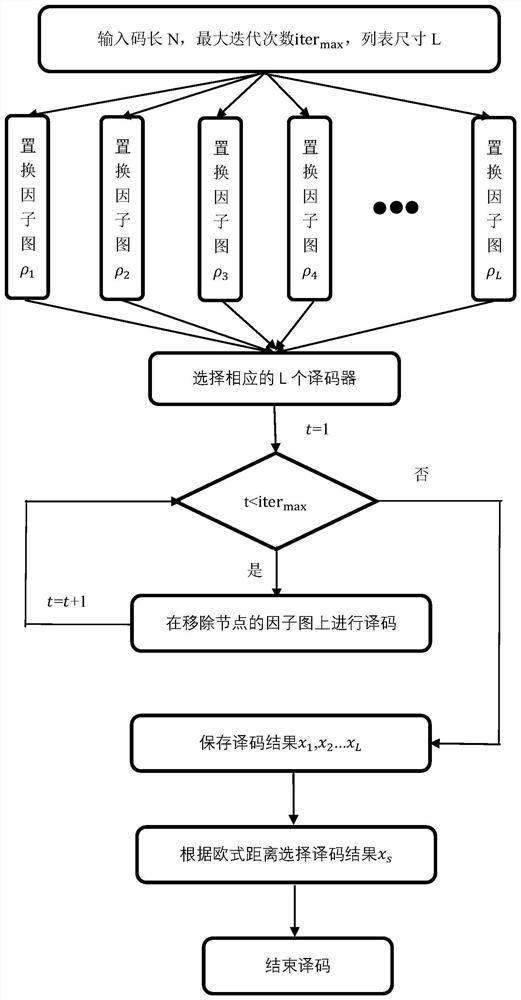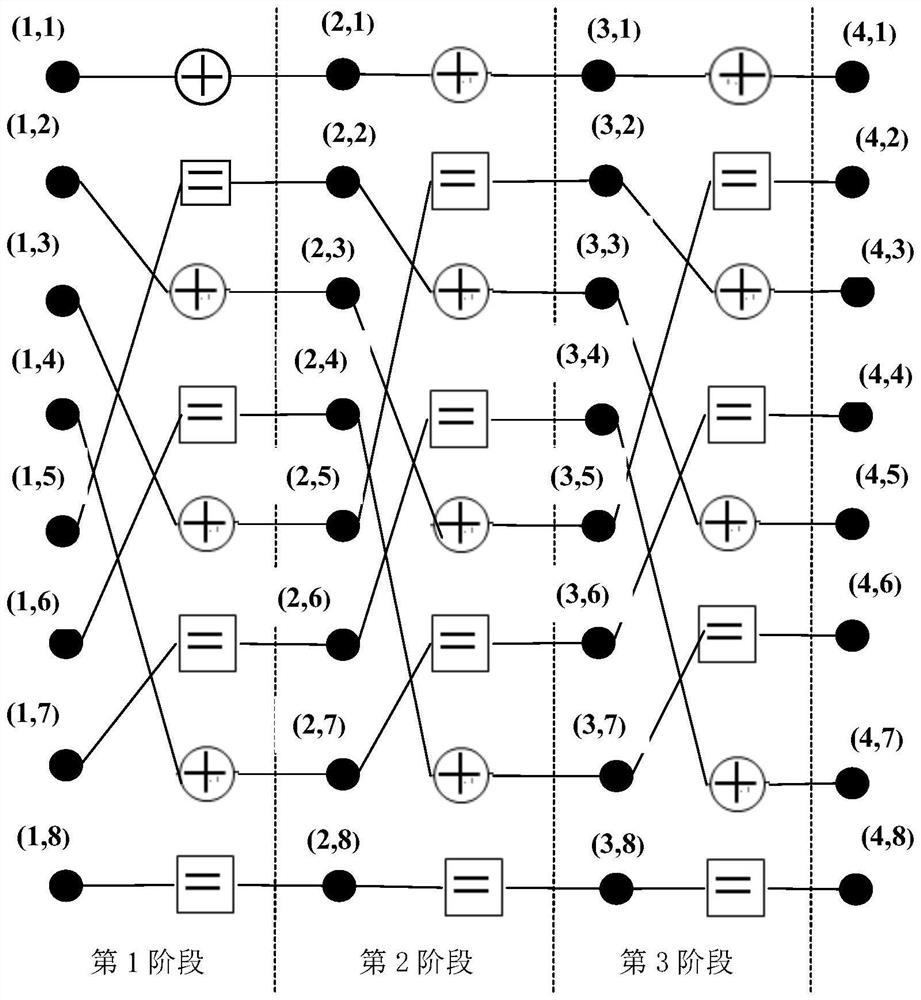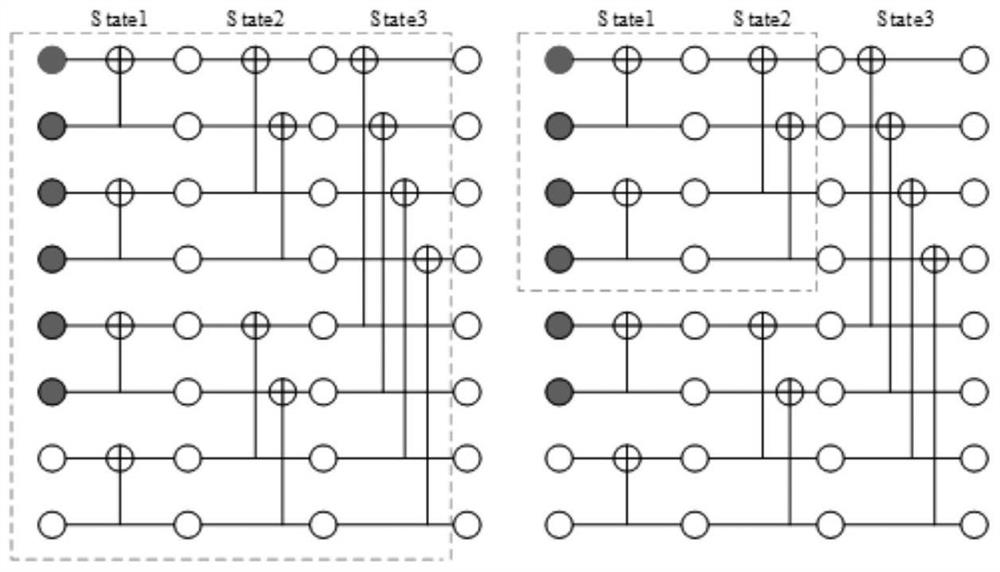Self-adaptive code length low-complexity BPL decoder
A low-complexity, decoder technology, applied in the field of adaptive code length and low-complexity BPL decoders, can solve the problems of high decoding complexity and slow response speed, so as to improve the decoding speed and reduce the decoding speed. The effect of complexity
- Summary
- Abstract
- Description
- Claims
- Application Information
AI Technical Summary
Problems solved by technology
Method used
Image
Examples
Embodiment 1
[0055] refer to Figure 1 to Figure 6 , for the first embodiment of the present invention, this embodiment provides a kind of adaptive code length low complexity BPL decoder, comprises the following steps:
[0056] S1: Input code length N, list size L and maximum number of iterations;
[0057] S2: Select the number of permutation factor graphs according to the size of the list;
[0058] S3: Decode on the factor graph after each permutation and save the decoding result. The decoding process is,
[0059] (S301) When decoding each permuted factor graph, open the storage of two matrices, L N×n+1 and R N×n+1 The initial values of the elements in the matrix are all 0;
[0060] (S302) The received log likelihood ratio LLR is used as the input data on the far right in the factor graph, and is filled into the n+1th column of L, and the prior LLR of the source bits is used as the leftmost column in the factor graph Enter the data, fill in the first column of R, specifically
[0...
Embodiment 2
[0087] In order to verify and explain the technical effect adopted in this method, this embodiment simulates the code length N, K=1024,512, which is widely used in 5G, and the code rate is 0.5. The transmission channel is BPSK-AWGN channel, and iterative The number of times is 60. The simulation results in this case are as follows Figure 7 shown. It can be seen from the figure that the proposed method of the present invention has similar performance compared with the existing BP decoder.
[0088] In terms of complexity, the complexity of the proposed decoder of the present invention is much lower than that of the traditional BP decoder. Table 1 shows the lengths of four component codes and common BP decoding components in an iterative process. The complexity comparison when it is 8.
[0089] Table 1
[0090]
[0091] It is easy to see from Table 1 that and The complexity of the composition code is nearly 86% lower than that of ordinary BP decoding, and The comp...
PUM
 Login to View More
Login to View More Abstract
Description
Claims
Application Information
 Login to View More
Login to View More - R&D
- Intellectual Property
- Life Sciences
- Materials
- Tech Scout
- Unparalleled Data Quality
- Higher Quality Content
- 60% Fewer Hallucinations
Browse by: Latest US Patents, China's latest patents, Technical Efficacy Thesaurus, Application Domain, Technology Topic, Popular Technical Reports.
© 2025 PatSnap. All rights reserved.Legal|Privacy policy|Modern Slavery Act Transparency Statement|Sitemap|About US| Contact US: help@patsnap.com



